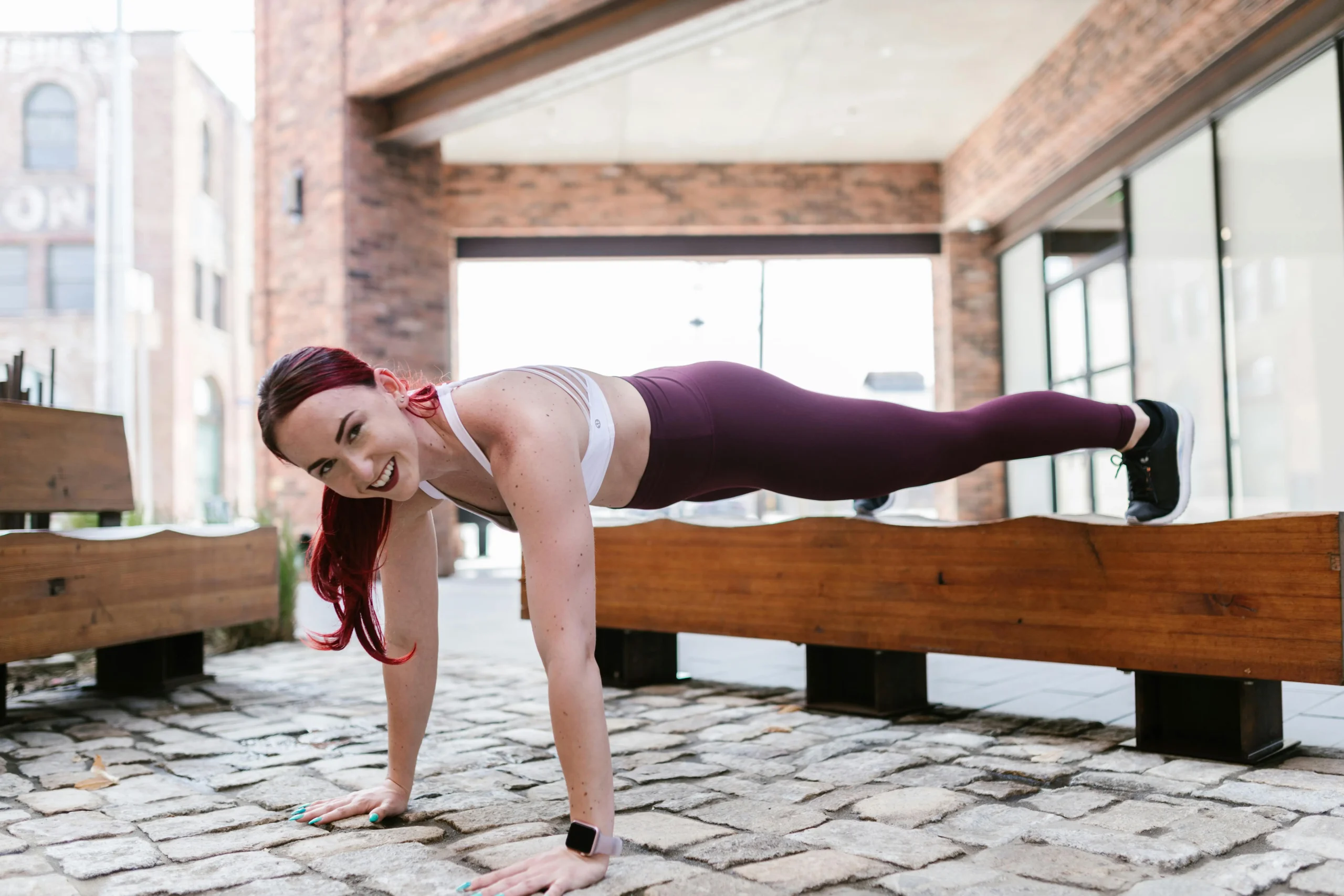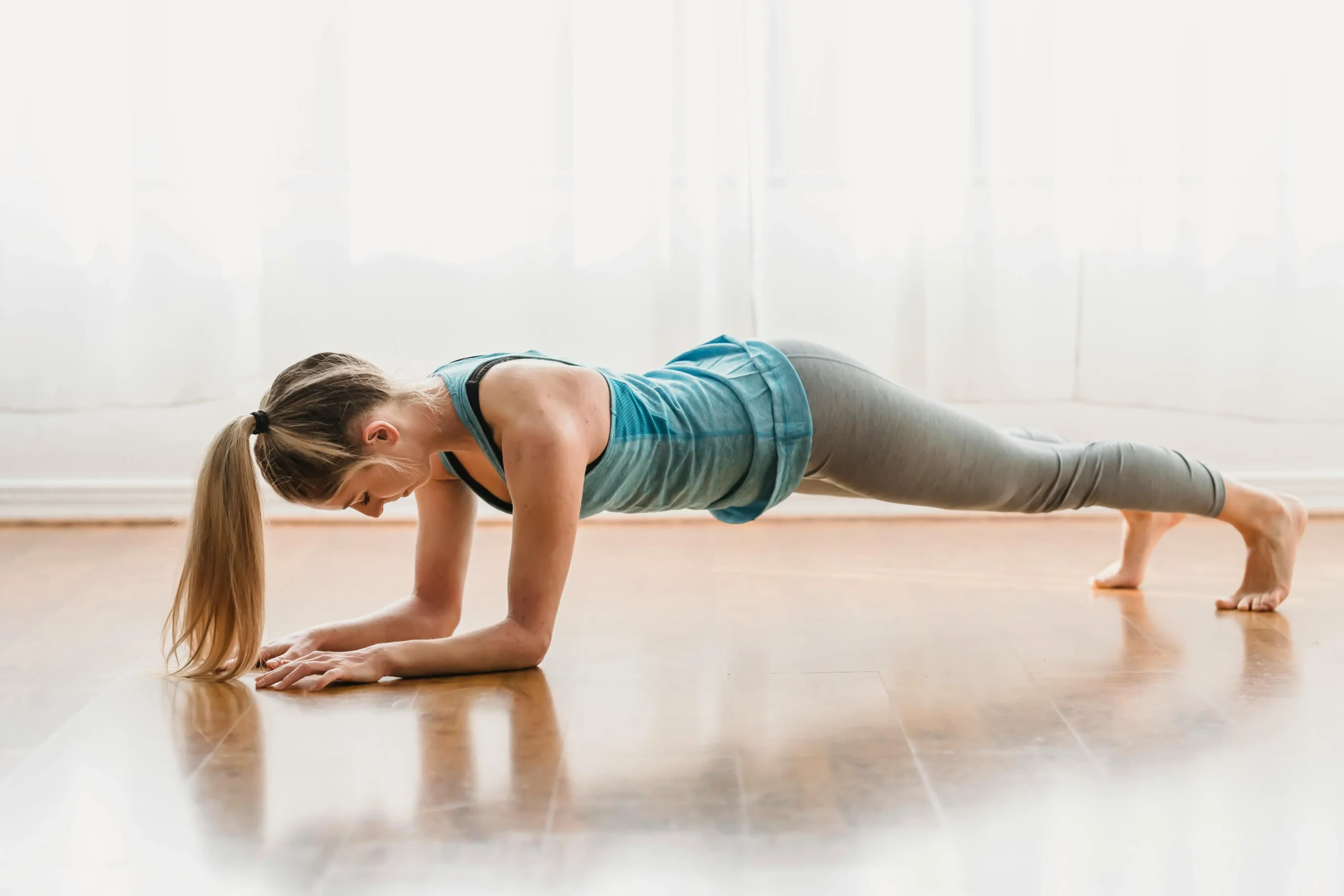You might want to know how to get started with Calisthenic workouts but don’t know where to exercise or what exercises will be best for a beginner. Do you want to know whether Calisthenics can be beneficial for you or not? We know you may have many questions about Calisthenics.
Behold with us throughout this blog as we explain everything you need to know about Calisthenics and how to get started with it.
Table of contents
- What is Calisthenics?
- Benefits of Calisthenics
- Calisthenics Workout for Beginners
- No-Equipment Calisthenics Workout
- The Best Way to Stick to Your Workout Plan
- Calisthenics Safety Tips
- Frequently Asked Questions
- 1. What is Calisthenics?
- 2. Can I do Calisthenics without any equipment?
- 3. What are the benefits of Calisthenics?
- 4. Is Calisthenics suitable for beginners?
- 5. How often should I practice Calisthenics?
- 6. How can I ensure I am performing the exercises correctly?
- 7. Can Calisthenics help me lose weight?
- 8. What should I do if an exercise is too difficult?
- 9. How long does it take to see results from Calisthenics?
- 10. Are there any safety tips I should follow?
- 11. How can I stick to my Calisthenics workout plan?
- 12. Can Calisthenics be combined with other forms of exercise?
- Conclusion
- Latest Posts
What is Calisthenics?
Calisthenics is a form of exercise that uses the exerciser’s body weight and requires little to no equipment. A calisthenics session uses gravity and your body’s resistance to increase muscle strength, coordination, endurance, and mobility. Bodyweight exercises like squats, pushups, lunges, and crunches are mostly Calisthenics!
With Calisthenics, you can do simple exercises like squats that require no equipment, more advanced ones like pull-ups and muscle-ups (like pull-ups, but you pull your entire torso above the bar), and even more complex ones like gymnastics.
Depending on your training style, these exercises can complement other types of training, or you can focus exclusively on Calisthenics.
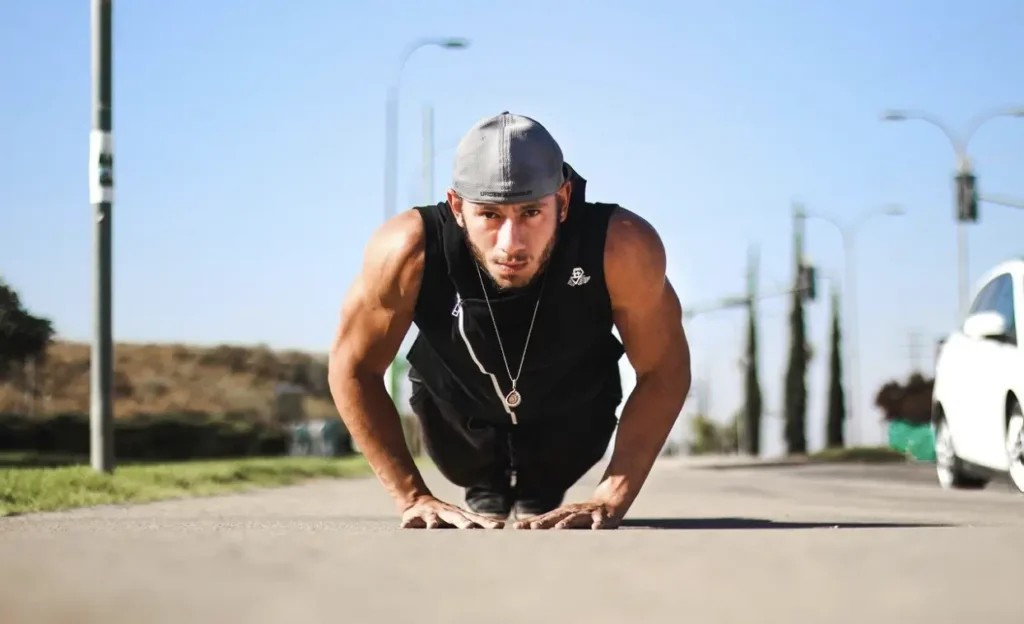
Benefits of Calisthenics
Calisthenics have many benefits, including the flexibility of doing them anywhere.
Improves Functional Fitness
Calisthenics mimics everyday motions and can enhance function during daily activities. For example, squats and lunges make it easier to go down stairs or climb hills.
Posture Improvement
According to one study, participants who performed Calisthenics improved their posture, whereas those who did not practice Calisthenics did not show any improvement.
Strengthening Your Body
Practicing Calisthenics regularly increases upper and lower body strength, making it an effective resistance training method.
Your Entire Body is Engaged in Calisthenics
Combining upper and lower body exercises with calisthenics training can easily be a full-body workout. To maintain good technique and balance, you’ll need to engage your core throughout many calisthenics movements.
Calisthenics Workout for Beginners
Regardless of how fit you are, you should aim to master the basics, also known as the fundamentals, when it comes to Calisthenics. You can develop your strength by building upon these foundations. Basically, it consists of four fundamentals: pull-ups, pushups, dips, and leg training (think squats and lunges). A plan is essential. Decide where and when you want to work.
In the same way you would schedule a meeting or a date, you can also plan your workouts. Prioritizing your workout will help you stay motivated. Check out these popular Calisthenics for ideas on what exercises to include in your workout plan.
No-Equipment Calisthenics Workout
All four fundamentals of Calisthenics are addressed in this workout for beginners with no training experience.
Squats
- Stand with your feet parallel to your shoulders, facing forward.
- Spread your feet a few inches apart and point your toes slightly outward.
- While bending your knees, lower your hips down and back into the squat.
- Face forward, chest upright, head forward.
- Squat deeply, then jump forcefully upward.
Squats should never be done with your knees bent over your toes, as this increases the knee joint strain.
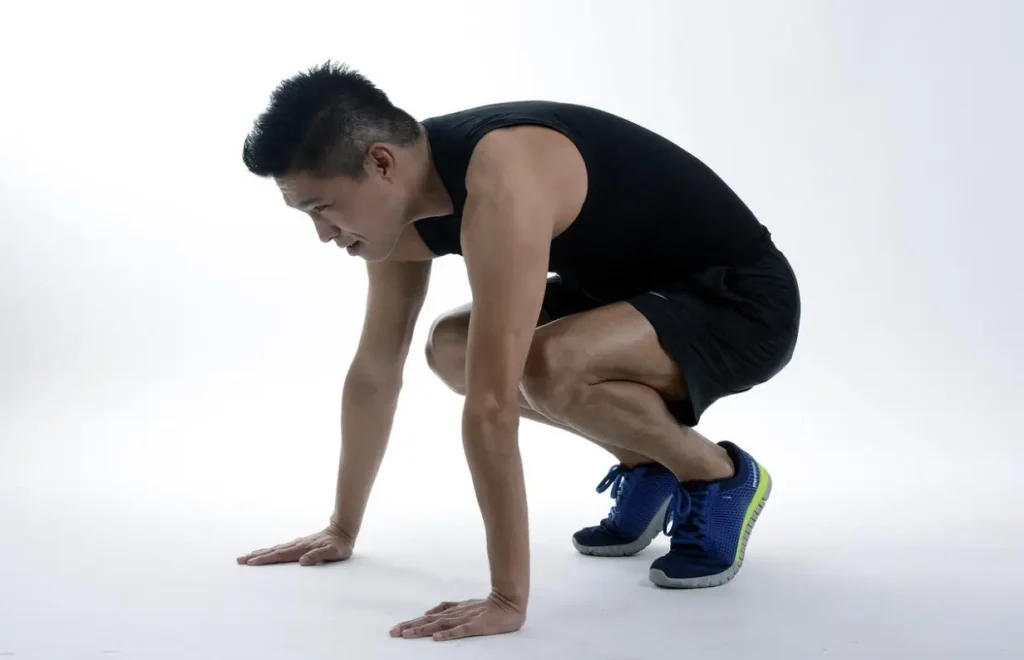
Superman Hold
It works your glutes, strengthens your spine, and develops your core. This is an essential exercise for building strength for front and back lever skills.
- Place your arms and legs outstretched while lying face down.
- Raise your arms, legs, upper back, and head off the ground. Make a “U” shape with both sides of your body several centimeters off the ground, with your arms and legs straight but not locked.
- Once you have reached this position, hold it for a few seconds before lowering yourself back to your starting position.
Keep your head in a neutral position aligned with your spine while performing the Superman Hold. Stop and fix your form if you feel like you’re straining your neck.
Lying Leg Raises
Exercises such as Lying Leg Raises help you build the core strength necessary to lift heavy weights.
- Raise your legs toward the ceiling while lying on the floor with your arms next to your body. A slow negative can mimic the difficulty of a dragon flag.
- Immediately before your legs touch the ground, lift them again.
You must keep your lower back flat on the floor throughout this movement.
Pull-ups Against a Wall
- Face a door frame or a pole.
- Lean your body back and grasp the object with your hands on each side.
- Pull yourself closer to the surface by contracting your back and bicep muscles.
- Extend your arms while exhaling.
Performing planks
A plank is a simple yet challenging exercise that enhances core strength, stability, and balance. In this exercise, you raise one hand at a time to a high plank, then lower it back down.
- In a pushup position, place the forearms flat on the ground.
- Maintain a straight line with your body by flexing your core muscles.
- Keep the hips in a neutral position for as long as possible without letting them fall.
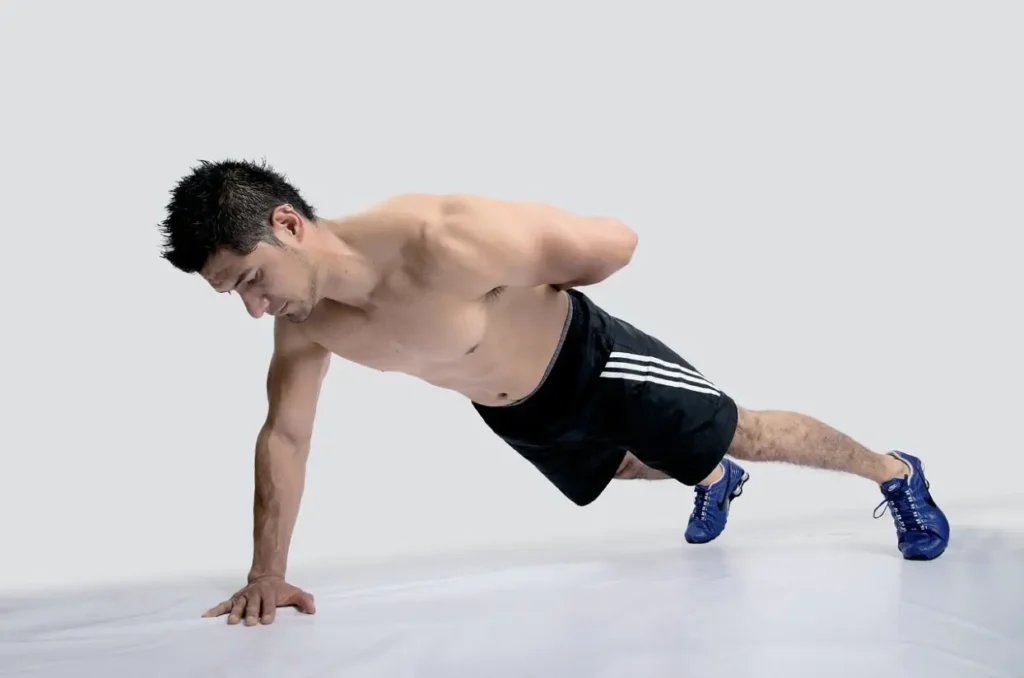
The Jack Knife Squat
- Put your feet hip-width apart and point your toes slightly outward as you stand facing a stable surface, such as a chair or wall.
- Bend your knees and grab your hands on an elevated surface. Lower down to bring your thighs parallel to the ground. Face forward with your head upright.
- Extend your legs by pushing through your heels upon returning to the starting position.
Front Lever
You might have a hanging rod somewhere in your house or a place you’re familiar with; that’s all you need to perform this workout. A front lever exercise strengthens your lats and gives you phenomenal core strength.
- Start by hanging onto a bar and letting your body hang loose. Using your arm and lat muscles, tighten your grip on the bar and raise your body into a tucked front lever hold. You should be able to hold it for at least 10 seconds.
- Once you can comfortably do the tucked hold, move onto the advanced tuck front lever hold, where your knees are slightly away from your chest.
- Practice holding the straddled front lever with your legs extended and wide to the sides.
- If you are good at straddling, try a modified front lever hold in which you are parallel to the ground but bend at the knees to let your legs hang loosely.
- Use resistance bands to practice a full front lever.
Practice the full front lever without assistance once your body is comfortable and you have built enough strength.
Burpee
- Keep your arms at your sides and your feet about hip-width apart as you stand.
- Place your palms forward in front of your feet and bend down.
- Assume the high-plank position by jumping your feet out behind you.
- Maintain a straight spine and a tight core.
- Push yourself up.
- Keep your hips from sagging and your back from arching.
- Make a squat by jumping your feet outside of your hands.
- Jump and stretch your arms high above your head.
- To absorb the impact of landing, bend your knees.
Burpees can be modified by omitting the pushups. Alternatives like this are good for people who can do burpees but not pushups yet.

The Crunch
- Lie flat on your back on the ground.
- When you cross your hands behind your head, keep your head about a fist’s distance from your chest.
- By keeping your core tight, sit up until your elbows or chest touch your knees.
- Use your core muscles to pull yourself up, breathing out as you sit up and in as you lie down.
Lunges
Lunges are best for the glutes, hips, thighs, and abdominal muscles.
How to do it:
- With your arms straight down by your side, stand with your feet hip-width apart.
- With your right leg, take a big step backward (about two to three feet).
- Bend both knees at 90 degrees, keeping your left knee directly over your ankle and your right knee pointed toward the ground.
- To start upright, push up your left leg and bring your left foot forward to meet your left.
Pushups
In Calisthenics, pushups are the most fundamental exercise and a prerequisite for many skills like handstands, planche, and front levers.
It targets many muscles (chest, shoulders, triceps, abdominals) and is simple to do.
Proper Pushups require keeping the Hollow Body Position (rounded back) during the whole movement and engaging the abdominals, shoulders, and legs.
- Do not let your chest drop or your back arch.
- It is also really important to pay attention to your hand position.
- While moving, keep your elbows as close to your body as possible and place your wrists vertically under your solders.
Also, make sure you are doing the exercise in its entirety. You are better off performing fewer full-range reps with perfect form than many short-range reps with poor form. You can play around with a lot of different Pushup variations depending on your hand position.
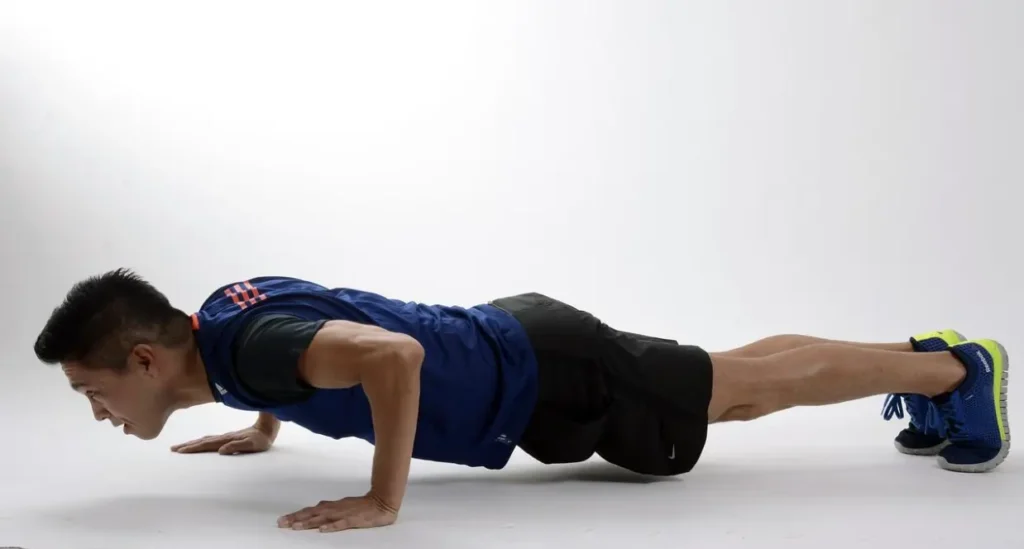
The Best Way to Stick to Your Workout Plan
The best workout plan doesn’t require a lot of equipment, especially if you’re just starting (or haven’t trained for a while). Getting started is all about finding a practical exercise plan that focuses on a few good exercises, as well as sticking to that plan.
That last part is important and the hardest. Initially, we might be enthusiastic about anything new, but forming a habit sustains us.
Most habit-forming books conclude that a habit must be easy and convenient enough to begin with that you cannot say no to it—no matter what’s happening in your life.
Calisthenics Safety Tips
Calisthenics is generally very safe, especially since it requires only your body weight, and many modifications are available for beginners.
It is versatile and low-risk in terms of injury. However, it is important to seek professional instruction before trying any new exercise since improper form can result in muscular imbalances.
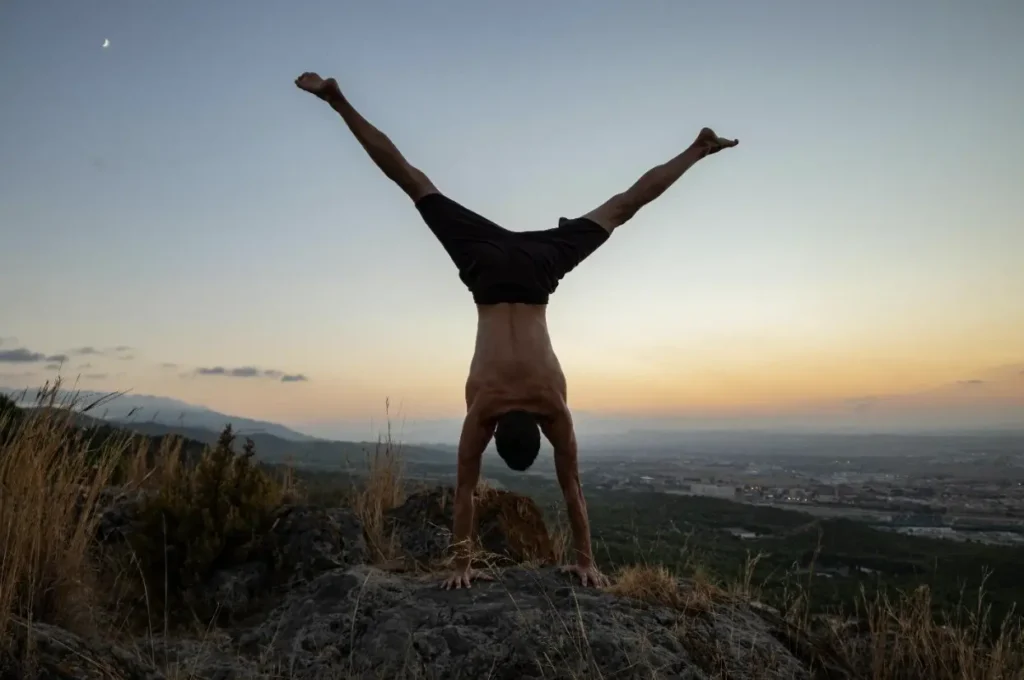
Frequently Asked Questions
1. What is Calisthenics?
Calisthenics is a form of strength training that uses your body weight as resistance. It includes exercises like squats, pushups, and lunges, and is designed to improve muscle strength, coordination, endurance, and mobility.
2. Can I do Calisthenics without any equipment?
Yes, one of the major advantages of Calisthenics is that it requires minimal to no equipment. Exercises like squats, pushups, and lunges can be done anywhere, making it a highly accessible form of workout.
3. What are the benefits of Calisthenics?
Calisthenics offers numerous benefits such as improving functional fitness, posture, and body strength. It can be a full-body workout that engages your entire body, especially when combining upper and lower-body exercises.
4. Is Calisthenics suitable for beginners?
Absolutely. Calisthenics is ideal for beginners as it starts with fundamental exercises that can be modified to suit your fitness level. Starting with basics like pull-ups, pushups, dips, and leg exercises helps in building a strong foundation.
5. How often should I practice Calisthenics?
The frequency of your workouts depends on your fitness goals and schedule. However, a good starting point is to aim for 3-4 sessions per week, allowing your body to rest and recover between sessions.
6. How can I ensure I am performing the exercises correctly?
Proper form is crucial to avoid injuries and to get the most out of your workout. It’s recommended to seek professional instruction or consult reliable online resources for guidance on proper technique.
7. Can Calisthenics help me lose weight?
Calisthenics can contribute to weight loss as part of a healthy lifestyle. Combining Calisthenics with a balanced diet and cardiovascular exercises can enhance fat loss and improve overall fitness.
8. What should I do if an exercise is too difficult?
Many Calisthenics exercises have modifications to suit different fitness levels. If an exercise is too challenging, look for an easier variation or reduce the number of repetitions to build strength gradually.
9. How long does it take to see results from Calisthenics?
The time it takes to see results varies depending on factors like your starting fitness level, workout frequency, and diet. Consistency is key; most people notice improvements in strength and endurance within a few weeks.
10. Are there any safety tips I should follow?
To reduce the risk of injury, always warm up before starting your workout and cool down afterward. Pay attention to your body’s signals and don’t push through pain. Ensure you’re using proper form and consider consulting a fitness professional if you’re unsure.
11. How can I stick to my Calisthenics workout plan?
Sticking to a workout plan requires habit formation. Start with a simple, manageable routine that you cannot say no to, regardless of circumstances. Consistency and setting realistic goals are key to forming and maintaining the habit.
12. Can Calisthenics be combined with other forms of exercise?
Yes, Calisthenics can be an excellent complement to other types of training. Whether you’re into running, weightlifting, or yoga, integrating Calisthenics can enhance your overall fitness and performance.
Conclusion
Calisthenics is ideal for beginners and experienced exercise enthusiasts who want to work out without equipment. These exercises use your body weight for resistance so that you can perform them in small spaces in short intervals.
A calisthenics workout routine is a great way to build stamina, endurance, and strength. By using body weight and gravity as resistance, Calisthenics strengthens your muscles with minimal equipment.
